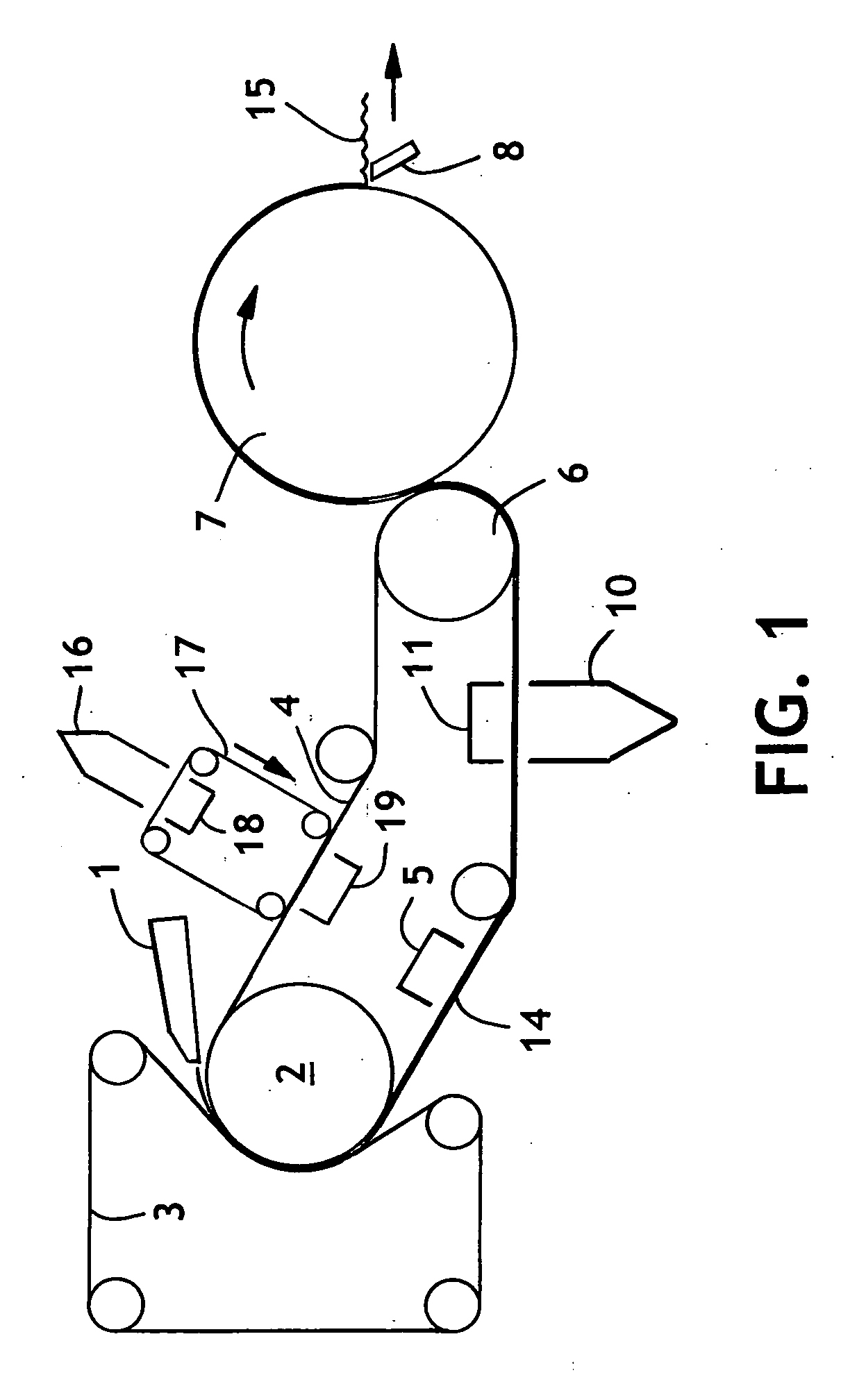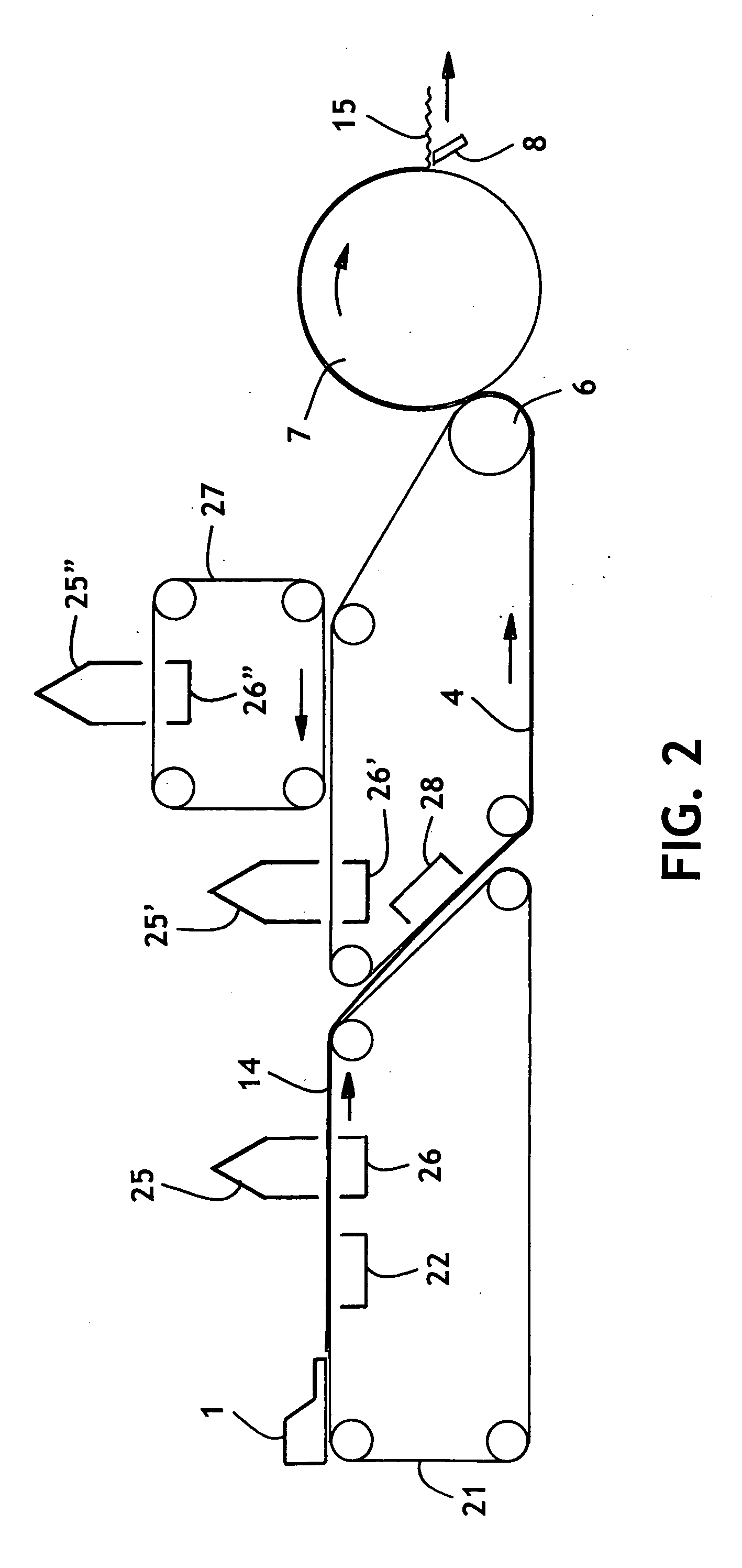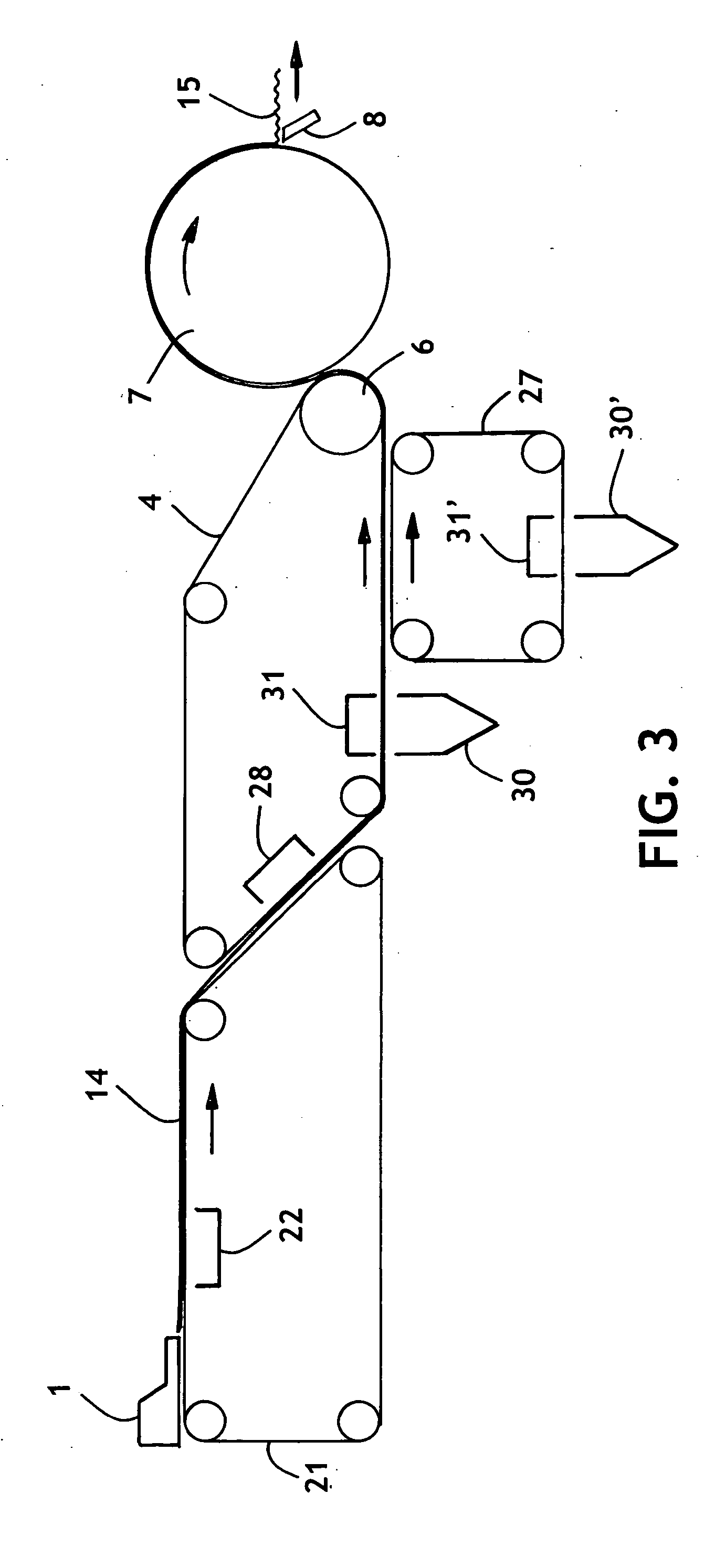Wet-laid tissue sheet having an air-laid outer surface
a tissue sheet and air layer technology, applied in the field of wetlaid tissue sheets having an air layer outer surface, can solve the problems of slow machine speed, high cost, process discontinuation, etc., and achieve the effect of reducing drying load in the drying section, reducing the consistency of the combined web, and eliminating the limitation of machine speed
- Summary
- Abstract
- Description
- Claims
- Application Information
AI Technical Summary
Benefits of technology
Problems solved by technology
Method used
Image
Examples
example 1
[0034] In order to further illustrate the invention, air-laid handsheets were made and combined with a wet-laid web on a continuous pilot tissue machine as described in FIG. 4.
[0035] More specifically, the air-laid handsheets were produced using two different fiber types. One fiber type was a hardwood fiber and the other was a softwood fiber. The hardwood fiber was derived from an Aaracruz eucalyptus pulp treated with a polysiloxane at an add-on level of 0.7 dry weight percent to improve softness. The coarseness index for the eucalyptus fibers was about 6.8 mg / 100 m and the average fiber length was about 0.6 mm. The softwood fiber was a commercially available Scandinavian softwood pulp, Rauma Biobrite™, which contains a debonder. The average fiber length was about 0.9 mm. and the coarseness index was about 13.9 mg / 100 m. A Kamas laboratory fiberizer (Type H-01 from Kamas Industries, Vellinge, Sweden) was used to fiberize the pulp in preparation for making handsheets. However, in or...
example 2
[0044] Trials were conducted in the configuration of FIG. 2 using a Weavex Millenium 1C felt as the fabric 4. A blended wet-laid basesheet of 50 percent Aracruz eucalyptus hardwood and 50 percent northern softwood kraft (LL19) was made with headbox 1 and partially dewatered with vacuum. An air former (25) was placed over a vacuum slot (26). The air former was supplied with a dilute mixture of dry fiber and air by feeding strips (2 inches×18 inches) of Rauma Biobrite pulp into the feeder slot of the Kamas H-01 Laboratory Hammermill fiberizer at a constant rate so as to deliver a continuous flow of fiberized fluff through a rubber hose and into the forming box (25). The fiber was transported with the aid of an EXAIR air amplifier mounted in-line with the hose and supplied with compressed air for operation. Air flows were adjusted to maintain a velocity of about 20 meters per second through the hose to minimize fiber deposition or clumping in the hose. Baffles inside the forming box (2...
PUM
 Login to View More
Login to View More Abstract
Description
Claims
Application Information
 Login to View More
Login to View More - R&D
- Intellectual Property
- Life Sciences
- Materials
- Tech Scout
- Unparalleled Data Quality
- Higher Quality Content
- 60% Fewer Hallucinations
Browse by: Latest US Patents, China's latest patents, Technical Efficacy Thesaurus, Application Domain, Technology Topic, Popular Technical Reports.
© 2025 PatSnap. All rights reserved.Legal|Privacy policy|Modern Slavery Act Transparency Statement|Sitemap|About US| Contact US: help@patsnap.com



